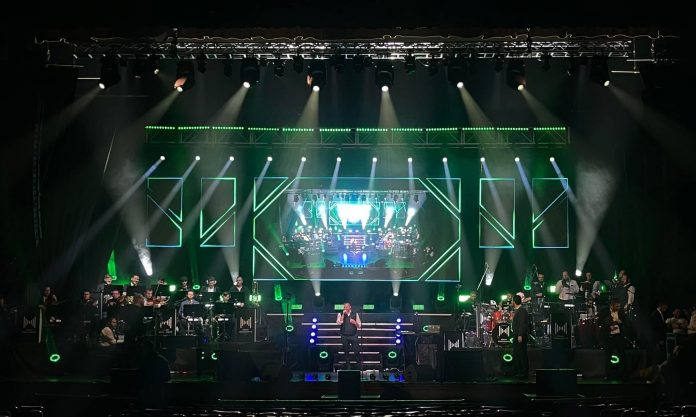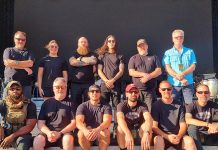
Lighting Designer, Moshe Baskin of the Eagle Production Co. recently put his 48 CHAUVET Professional fixtures in motion for Winterlude, a collective performance by some of the leading stars in Jewish pop music.
Treating his lighting rig as if it were an orchestra, Baskin created a dynamic flow of effects that moved in harmony with the music of the various artists note-for-note throughout the concert.
He worked closely with the creative team: Shaya Adler of Eagle Production Co.; Shlome Steinmetz, the show’s director; and Mendy Herkowitz of Mendy H Band and Visual Live. He designed chase sequences that moved across the width of the stage like the fingers of a maestro on a keyboard. At other moments he energised the stage with a series of rotating gobos, before sending bursts of white light over the mesmerised crowd.
“With the motion and chases I tried to mirror the flow of music, as if I was visualising the tempo,” said Baskin. “I picked colours based on the energy of the music. Reds were emotional, and they really made the venue pop. Amber and white were a good combination for that high and happy energy felt throughout the show. I used white on the spots with the gobos to create that pattern effect on the stage as the position effect crossed over the stage to give it some texture.”
Eight Maverick MK3 Profile and six Maverick Force S Spot fixtures helped shape these gobo patterns and aerial effects. Contributing to the richly diverse palette that Baskin used to reflect a range of emotions on stage were 14 Rogue R1 Wash and six Ovation E-910FC units, arranged in two towers of three fixtures on the balcony.
Key to Baskin’s design concept were the eight Maverick MK Pyxis fixtures arranged in groups of four in front of each side of the split bandstand. Having the RGBW moving fixtures positioned this way helped him pull the band into the audience’s view of the show while the singer occupied the middle of the stage.
“By positioning the Pyxis in front of the band, we kept attention on the whole stage,” said Baskin. “We wanted an eye candy effect that would pull attention to the band without distracting from the singer. The Pyxis with its ring of LED surrounding a larger centre pixel, gave us plenty of movement and a variety of looks that captured attention.”
Joining the Pyxis fixtures were Maverick MK2 Washes, which were spread across the width of the stage. Baskin used these lights to vary his coverage areas following the flow of the music, taking advantage of this fixture’s wide zoom range.
“I coordinated my Pyxis and Maverick Washes so they had the same rhythmic effect on my visuals,” he said. “For this reason, I didn’t use the beam function on my Pyxis during the entire show. What I wanted to do was coordinate the same smooth flow of washes for the whole production.”
The precise looks of Baskin’s show are especially impressive, given that he had very little time to prepare. His rig was confirmed only two days before the event and he didn’t receive a set list until the concert was about to start. “Luckily for me, being Jewish, I heard these songs as a kid,” he said. “So, I was familiar with the timing and bumps.”
Describing his show as “being done on the fly,” Baskin believes that his decisions when he sat down at his ChamSys MagicQ MQ500M were based on the “emotions and energy felt in the moment.” However, like motion itself, this kind of improvisational fervour is often at the heart of great music. Of course, the same can also be said of the lighting designs that support it.





